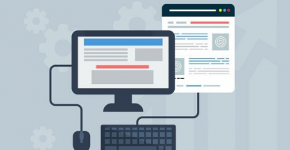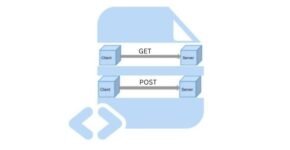What is Prototype in Software Engineering Model?
Nowadays, several software is being developed and opted by organizations as a primary component of their infrastructure. As a result, most enterprises join forces with a software development company to create a robust business application. For constructing a website, web app, or desktop app, each IT firm follows a set of guidelines, instructions, protocols, and steps to ensure an appealing solution providing edge-to-edge services to your stakeholders.
Software Engineering Models are followed by IT companies as a critical reference from the beginning of the software project until the application is not delivered to the client. Various engineering models are currently available, and each includes a different set of phases. Building a software prototype is also a phase of the development lifecycle, which is highly recommended to every development team.
Keep reading further for having a better insight into the highly-acclaimed Prototype phase of the software lifecycle.
A brief about Software Engineering Models
Software Engineering Models are the set of fixed methodologies and guidelines followed for constructing a cutting-edge application according to business goals and demands. Numerous models are available, such as Agile, V-Model, Incremental, RAD, Spiral, and many more. However, regardless of the name, one task is common in these approaches: furnishing a prototype before beginning with actual development.
These models aid both the client and IT firm in improving the communication, collaboration of teams, reducing cost, cutting down excessive requirements, identifying goals, evaluating performance, and so forth. In addition, the development team is immensely assisted with a model and assures to innovate a quality product.
Focusing upon Prototyping in Software Engineering
A prototype model is a preliminary visualization of the final software, and it is generated before the software development is started. A company invests its resources to get a high return on investment. Therefore, it must ensure that it will receive the software, which can effortlessly reinforce and automate its core operations. And, by generating prototypes, the client and development partner can come onto the same level and understands the project goals.
There are numerous advantages of Prototype models as listed down:
- The risk of product failure is decreased, as user involvement is at each level.
- Appropriate final software is delivered, as most of the cost, time, software, and hardware errors are identified and corrected.
- User feedback is collected, helping developers innovate an optimized solution for the enterprise.
- Integration of APIs, Gateways, and complex technologies is quickly discovered, helping to assess the project plan effectively.
- A lead for innovation and designs is produced. Moreover, the prototype can educate future users and developers.
Phases of Prototyping Model for Software Development
Multiple tasks are included in fabricating a prototype for every software project, and it is an essential task that must be performed with concentration and focus on the business requirements. Every development team must follow the below-listed steps in constructing a precise prototype.
Stage #1: Communication and Requirement Elicitation
The first step in fabricating a prototype is collecting information from primary and secondary stakeholders. For this purpose, various interview and discussion sessions are conducted, and a questionnaire is prepared by business and technical analysts to cover every aspect of the project. Further, after documenting all the required details, the project scope is crafted, and precise business demands are outlined.
In addition, collected requirements and outlined project scope are shared with the client to finalize and clear all the doubts. Primarily, a PowerPoint presentation is created to demonstrate a rough framework of the application, website, and web application.
Stage #2: Prototype Creation
This is the second stage of constructing a software prototype, and information documented in the previous phase is used. Two types of prototypes are built, low-level and high-level, and both are crafted following the agile approach. Again, small iterations are created to ensure a better collaboration among designers, analysts, project managers, and developers.
Simple blueprints are produced in the low-level design, and color combinations, textures, and gradients are selected. The development team approves the low-level design, and it is used as a primary reference for building the high-level prototype. It is the final prototype with minimal functioning, so that client can get a better insight into the software going to be developed.
Stage #3: Gathering Customer Feedback
When the development team finalizes the prototype, it is shared with the client, and a live demo and document containing all the required details. Each identified stakeholder needs to evaluate the functioning and features from its perspective. A time period is defined for each stakeholder to go through every feature and provide feedback.
Feedback gathered from primary associates is analyzed and cross-verified with the business demands and goals defined in the first stage. Additionally, the project scope is re-defined, and meeting sessions are conducted to understand the changes.
Stage #4: Iterating Prototype Cycle
Once the changes are confirmed, the next iteration cycle is commenced, and all modifications are performed in the prototype. Again, the process of low-level and high-level design is initiated, and feedbacks are considered for assuring to conclude each element leading to complete project scope.
Once the prototype is ready, it is shared with the client, and if the majority of stakeholders approve it, then the development teams move to the next stage of the software development life-cycle.
Stage #5: Software Development Initiation
This is the last phase of the prototype development process, as it leads the team to move further and begins the actual fabrication of the software. Essential hardware and software resources are assigned to the teammates, and different communication modes are established between the client and authorized person. Current progress and client queries are exchanged through defined modes, and Gantt charts are followed for completing the project before the deadline.
Prototype Software Development Models
Every software is different in functioning, requires a diversified tech stack, cost, and time for development. However, before creating software, a prototype creation is a must to be performed procedure, as it aids both client and team to define project scope effectively.Also, it is crucial to pick out an appropriate model, as further development phases are based on it.
Rapid Throwaway Prototyping Model
It is the most basic model, which can be used for any software project, as its primary objective is to create a visual of the final product. It can be an image or a video representation of the software. The client’s feedback is the primary information required under this mechanism. The outsourced partner rebuilt the prototype again and again until the client was not satisfied with the design and required features.
As a result, risks and defined timeline is reduced, as all the conditions are accurately understood in the initial stage. In addition, cost constraint is also eliminated, as effort is minimized in upcoming development phases.
Evolutionary Prototyping Model
The evolutionary approach is preferred for projects including integration of complex technologies and where all the business needs are not defined simultaneously. It is also known as breadboard prototyping, as software functioning comes in this model. Prototype crafted following its structure is utilized as a base for all the upcoming future prototypes. Any new changes and requisites are added in-between for quickly scaling up the level.
In addition, the user is more engaged, which ensures the digital partner fulfills all the user requirements within the calculated budget and described schedule.
Incremental Prototyping Model
When this model is selected for creating the prototype, the process is divided into small parts, and each feature of the application is furnished in a single part. As a result, many sub-prototypes are generated with different functionalities, and all these are combined to fabricate the final prototype. One of the significant drawbacks of this approach is that there can be a probability of non-compatibility between the different parts of the prototype. It can also increase the project timeline, which can delay the time-to-market.
Extreme Prototyping Model
Extreme Model is specially designed and considered for web designing projects, as it is divided into three stages, which are purely focused on creating a scalable, secure, and robust website. The first stage highlights the operations to create the basic structure using HTML. It is then forwarded into the second stage, where data flow and backend designs are generated. And, in the final level, services are embedded to build a final prototype, which is shared with the client. As a result, developers can write a clean codebase adjoining all the vital technologies in the business solution.
Conclusion
Software Engineering models are the basic guidelines and protocols, which are picked out as per the project scope and business goals, and creating a prototype is a part of this approach. In addition, it assures the client about the features and quality of the product and helps the development team to understand the requirements gathered from stakeholders.
One should always work with a trustworthy outsource Software Development Firm, which must follow a flexible approach to create final software and also provide you prototypes to modify the scope efficiently. It will lead you to achieve your business milestones and enhance productivity.





